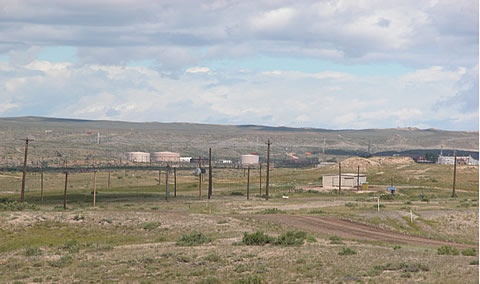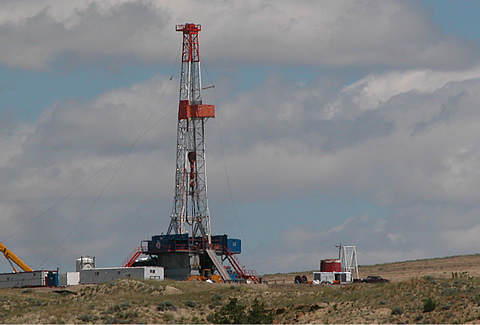The majority of initial proposed oil and gas development documents—i.e., Environmental Impact Statements (EISs), Environmental Assessments (EAs), and Project Plans—can be characterized by their lack of oil and gas references, conflicting model parameter assumptions, and inconsistent analyses. Many times this leads to applications being delayed at Federal and State agencies while data-gathering efforts are completed and complementary studies conducted.
Additionally, the basic information necessary to enable Federal and State regulators and other stakeholders to evaluate and make decisions has not been compiled in an easily accessible manner or location. Often this causes Federal and State agency land managers to be very conservative in their environmental assessments, which further limits the accessibility of Federal lands.
This dilemma is exacerbated by measures undertaken by nongovernmental organizations (NGOs) to block or delay development of vital energy resources in the United States. As the goal of NEPA has shifted to ensure that Federal decisions are made in an appropriate and environmentally sound manner after efficient review, the need is greater than ever to expedite access to existing oil and gas data.
Benefits
The results of the study are expected to cause a groundswell of interest by NEPA preparers, agencies, and special-interest groups. The researchers contend that the manual and accompanying SMART geographical information system (GIS) tools will enable land management agencies to come together on a consistent approach to analyze impacts from oil and gas developments, reducing conflicting decisions and encouraging responsible development. The SMART GIS-based analysis tool will allow regulatory agencies to evaluate various options for development alternatives in combination so that the maximum amount of oil and gas resources may be developed while providing improved environmental protection.
These tools will also assist land management agencies with infill-development decisions for fields to increase production. By providing easily obtainable factual and verifiable data and proven analysis methods, a consistent review process can be agreed upon among all stakeholders, resulting in increased domestic onshore oil and gas production with the same or increased levels of environmental protection.
Results
Development is underway of data management tools that provide faster and more comprehensive access to existing oil and gas data. This is being accomplished through research and interviews focused on improving consistency for decision-makers, defining technically sound analytical methods, detailing real-case scenarios for energy industry parameters, and compiling and presenting nationally assessed data relative to onshore oil and gas leasing and development—all in a manner required for an efficient review process under the National Environmental Policy Act (NEPA). Data and information from the results of the research will be assembled into a manual with nationwide applicability. The manual will leverage existing studies, reports, and other oil and gas-related information to generate a reference list of data sources that will be evaluated and compared with calibrate environmental impact and resource development assessment predictions.
An integral part of this research is conducting a case study on a targeted coalbed natural gas (CBNG) development area in Alaska to validate the manual. Development of a comprehensive resource manual for source and analysis guidance will allow operators, NEPA specialists, and Federal and State land management agencies to more efficiently develop accurate resource projections and more-reliable environmental impact analyses. It also will provide a common set of sound quantification methods and simple explanations for where, why, and how to use the methods under widely variable political, geographical, and environmental settings.
The study results, Improving Access to Oil & Gas Resources on Federal Lands, were published in March 2007.
Technology transfer efforts include the development and implementation of Navigating NEPA: an Oil and Gas Focused Training Program Training materials include a training handbook and presentation slides.
Summary
Researchers have conducted inquiries with more than 250 representatives of various Federal and State agencies, local governments, industry, and NGOs. These inquiries, along with independent research, identified dozens of NEPA documents and guidance manuals that address oil and gas development impacts and scenarios. IOGCC evaluated these documents and identified relevant methodologies used to predict oil and gas impacts. The initial evaluation is complete on the methods based on this approach, identification of the parameters considered, and categorization of them by regional settings. Researchers also have evaluated these methods for variations, regional influences, significant environmental parameters affecting impacts, and applicability to resource (oil or gas, conventional or non-traditional) development.
The comprehensive report on streamlining access to federal lands was sent out in draft form to cooperators. Comments were incorporated into the Technical Report. This report is available in hard copy and electronic versions from IOGCC.
The SMART GIS-based analysis tool development is under review. While the comprehensive manual produced large amounts of data in various parts of the country, in no way was the coverage nation-wide. The manual detailed the many types of impact possible by petroleum development, there was no attempt to catalog sensitive environment throughout the petroleum-producing states.
Interviews with cooperating agencies and other operators have suggested two highly controversial issues that pertain to oil and gas and NEPA – Categorical Exclusions and Adaptive Management. Each of these issues could be the subject of a focused, stand-alone topical report.
Categorical Exclusions (CX) are NEPA vehicles that allow minor development without the level of supporting data required under EAs. The Council on Environmental Quality has published new draft guidance that is currently under public comment. CXs could be used for in-fill or step-out drilling or changes in infra-structure. This vehicle has been under-utilized with petroleum development.
Adaptive management, correctly used, links knowledge and science with the experience and values of stakeholders and managers for more effective management decisions. Any adaptive management changes in the regulatory framework need to be based on a closely defined program of modeling, monitoring, and collaboration among a group of bona fide stakeholders. State oil and gas agencies have been using this methodology for decades to adapt regulations to a changing industry. This process needs to be explored in the NEPA oil and gas context to research its strengths. Proposed issues that might be amenable to adaptive management include wildlife restrictions and produced water management.
Improving Access to Oil & Gas Resources on Federal Lands, published in March 2007, presented guidelines and best practices for evaluating the potential environmental impact associated with oil and natural gas development activities.
To communicate this pertinent and crucial information to key stakeholders in the NEPA process, IOGCC and ALL Consulting have developed a practical handbook and educational program for use by federal agencies, industry, and consultants in preparing NEPA planning documents specifically related to oil and gas exploration and production. The program is based upon the results of the study and supplemental research regarding categorical exclusions and adaptive management practices also performed under the grant.






